An Idiot’s Guide To The Indianapolis 500

The Indianapolis 500 is Quite A Big Deal when it comes to motorsport. Not only is it considered part of racing’s ‘Triple Crown’ along with the 24 Hours of Le Mans and the Monaco Grand Prix, it’s the most-attended single-day sporting event in the entire world, usually attracting crowds of well over 300,000 people on race day.
Despite that, it can sometimes seem like a different universe to those of us used to watching F1. Why are the cars just racing around a giant rectangle? Why do people keep calling the track ‘The Brickyard’? What’s the deal with the milk? And just why does a group bigger than the population of Nottingham turn up to watch this every year? Ahead of the 109th running of the race on 25 May this year, allow us to explain.
Where does the Indianapolis 500 take place?
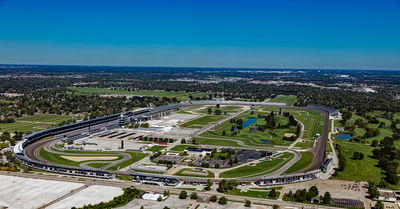
Indianapolis. Next question.
What, not specific enough? Okay, fine. The Indy 500 takes place at the Indianapolis Motor Speedway, a 2.5-mile oval course (although it’s more like a rectangle with rounded-off corners) situated on the outskirts of Indiana’s state capital. In fact, the suburb that’s grown around the track is literally called Speedway.
The circuit was opened in 1909, initially as a dirt oval. After the dirt surface was found to be spectacularly dangerous, the track was bricked over at the end of that first year, earning it the nickname ‘The Brickyard’. By 1961, the surface had been totally replaced again with asphalt, but beyond that, the circuit’s basic layout hasn’t changed in 116 years.
Also, it’s really big: the permanent seating capacity alone is north of a quarter of a million, and the entire site covers an area of about 0.87 square miles, more than the principality of Monaco.
Can I have a history lesson?
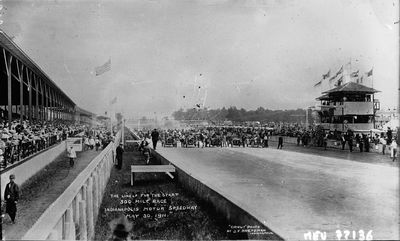
The Indy 500 was held for the first time in 1911, in its usual spot on or around the US’s Memorial Day public holiday (this takes place on the last Monday of May, and since 1974, the 500 has taken place the day before that). Having seen attendance numbers drop off throughout the season for the circuit’s first two years of existence, the track’s owners conceived the 500 as a way of consolidating all its racing activities into one marquis 500-mile race.
The race was skipped for 1917 and 1918, and again from 1942 to 1945, due to the US’s involvement in the two World Wars. There was a strange period between 1950 and 1960 when the 500 counted towards points in the Formula 1 World Championship, even though there was very little crossover between drivers entering the 500 and the regular F1 grid. This is why, listed in F1 stat history, you’ll see everyone who entered the 500 during this period.
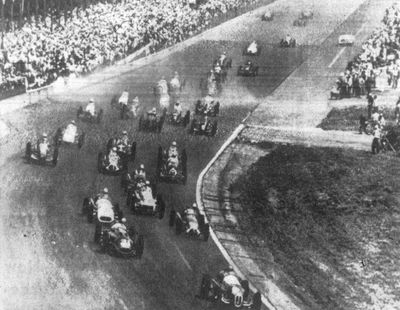
The sanctioning body responsible for the race has hopped around a few times. From the inaugural edition until 1955, it was overseen by the AAA, basically the American equivalent of the AA (you can guess what the extra ‘A’ stands for). From 1956 to 1997, it was organised by USAC, a motorsport-specific sanctioning body.
The 500 has also weathered both ‘Splits’, divisive events in US open-wheel racing that have twice seen the teams break away to form separate championships – first in 1978, and again in 1996. The history of these schisms is far too long and complicated to detail here, so we’d recommend you get Googling if you want to know more.
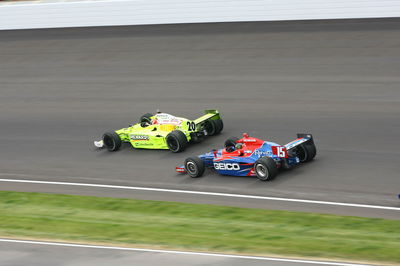
In short, though, the 500 survived both, and since 2008 has been part of the reunified IndyCar series. It remains easily the series’ most popular event, and truthfully, is far bigger than the championship itself. Much like the 24 Hours of Le Mans versus the World Endurance Championship, the average person in the street is much more likely to have heard of the Indy 500 than of IndyCar as a series.
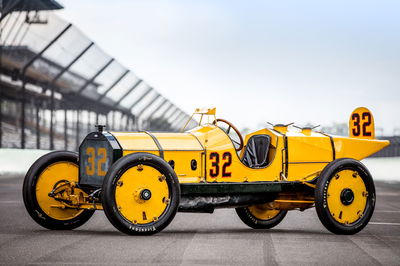
As for the cars, they’ve always been purpose-built racers, although in the very early days, they didn’t look too different to some of the more sporting road models available to the wealthy gadabouts of the era.
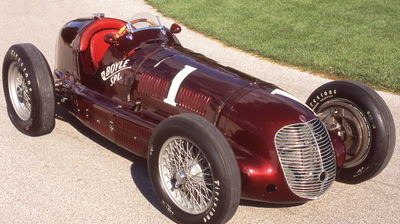
Over the decades, the cars evolved in a similar fashion to their global Grand Prix racing equivalents, and there’s even been some crossover – in 1939 and 1940, the 500 was won by the Maserati 8CTF, a car designed primarily to go Grand Prix racing in Europe.
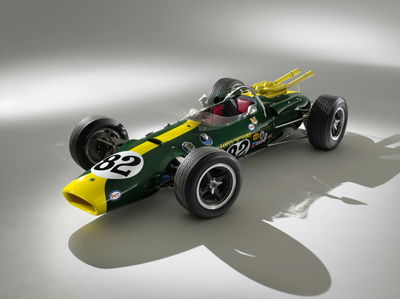
The 1960s were a period of big technical changes. The first win for a mid-engined car came in 1965, when Jim Clark took victory in a Lotus 38. 1968 saw the first win for a turbocharged car, Bobby Unser’s Eagle 68. Then, in 1969, Mario Andretti’s Brawner-Hawk MkIII became the first winning car with downforce-generating wings. All these innovations pretty much set the course for the way the cars developed from there on in, right through to today’s machinery.
What sort of cars race there?
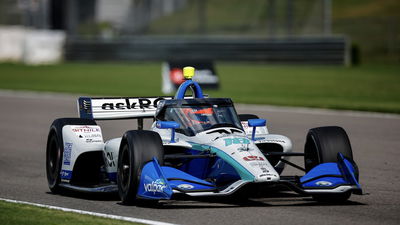
They’ll be IndyCars, the cars that contest the wider IndyCar championship. Both of these things are named after the 500, in case that wasn’t extremely obvious.
We’ve gone into them in quite a bit more depth in our handy F1 versus IndyCar explainer, but here’s the short version. Today’s IndyCars use a spec chassis, built by Italian constructor Dallara, and run 2.2-litre twin-turbo V6s, which went hybrid in 2024. Teams have a choice of Chevrolet or Honda engines, and are allowed to build certain components, like brake ducts and dampers, themselves.
The cars are open-wheel single-seaters like F1 cars, although obviously not that much like F1 cars. Lap-for-lap around a typical race circuit, an F1 car is miles quicker, but especially in their low-drag oval configuration, an IndyCar will hit a higher top speed – during Indy 500 qualifying, cars will average over 230mph throughout a lap.
What’s the race format?
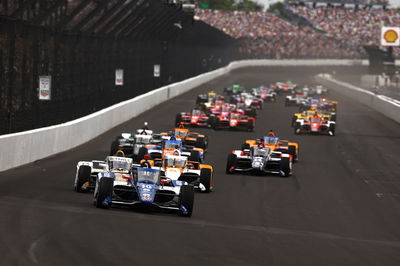
Nice and simple, this one. Rolling start, 500 miles – that’s 200 laps of the 2.5-mile circuit – go as fast as possible while conserving fuel, and try not to crash.
What about the rest of the event?
Oh boy. Buckle up – the 500 isn’t like other race events, with their three-day practice-quali-race format. The build-up to it is a whole thing on its own, lasting for much of the month of May, with lots of traditions and different sessions that can seem a bit contrived to those not familiar with it.
For a start, for the last few years, there’s been a whole other race at the Speedway two weeks ahead of the 500, to whet everyone’s appetite when the teams pitch up in Indianapolis in early May. This is the Grand Prix of Indianapolis, and takes place on the infield road course that hosted F1’s visits to the track in the late ’90s and early ’00s. It’s a proper championship event in its own right, but really just serves as a prelude to the big day.
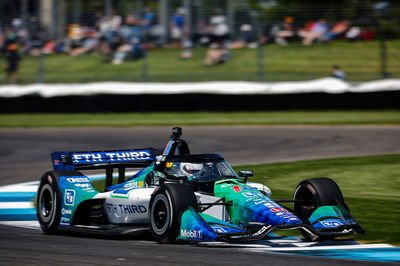
The Indy 500 festivities then kick off with three practice sessions, one per day, starting the following Tuesday – still a full 12 days before the main event. The Friday that week isn’t just Friday, either – it’s Fast Friday. It’s essentially another practice session, but the cars get an extra helping of boost from the turbochargers, so they’re running in the same spec they do for qualifying.
On that note, qualifying begins that Saturday, eight days ahead of the race. This is where things get even more contrived. Each car gets the track to itself for four laps, and the result is determined on average speed across these laps rather than time. What’s more, there are only 33 grid slots for the race, but often, more cars than this enter. In 2025, for instance, there’ll be 34 cars giving it a shot, which means someone’s gotta go.
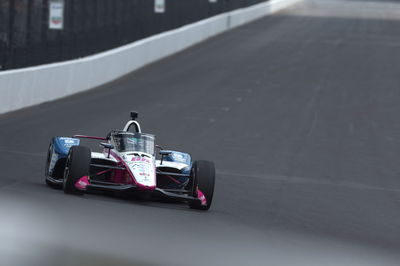
Saturday qualifying sees every entered car set a speed. This session sets the race grid for positions 13 down to 30. The 12 fastest, meanwhile, head out for another session on Sunday, with positions seven down to 12 locked in based on this session. The top six advance to yet another session, but not before Last Chance Qualifying, which sees the slowest cars from Saturday vie for the final three grid slots. Fail to finish in the top three here, and you’re not starting the race – this has led to it being nicknamed ‘Bump Day’.
Finally, the ‘Fast Six’ – the six drivers who’ve made it through every qualifying session so far – go out one last time on Sunday evening to determine the top six grid slots. Then, and only then, is qualifying done, but we’re still a week off the actual race.

There’s yet another practice session on the Monday before the race, and then another on the Friday. This is known as ‘Carb Day’, a name hailing from the days when teams would tune their carburettors ahead of the race back when carburettors were a thing. As well as the final practice session, Carb Day hosts the Pit Stop Challenge, where all the pit crews compete in an elimination-style tournament to see who can change all four wheels and pretend to refuel the cars the fastest. The day then traditionally finishes off with a concert.
It’s now Saturday, the day before the race, and there’s a quick break from the track action. This is Legends Day, which features an all-driver autograph session, a public driver’s meeting, and another concert.
Finally, over two weeks after the first track action in the Indy 500’s build-up, race day comes around. Phew.
What’s all this about milk?
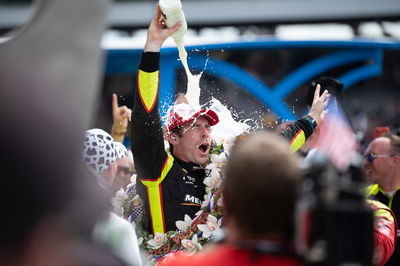
Perhaps more than any other race – heck, any other sporting event full stop – the Indy 500 is steeped in tradition. Perhaps most famously, the winning driver doesn’t swig Champagne on the podium, but sweet, sweet milk.
The story goes that driver Louis Meyer had a bottle of buttermilk ready to glug from after the 1936 race, apparently believing it to have particularly refreshing qualities. He happened to win that year and swigged from the bottle while sitting atop his winning car.
All this was captured on film, and supposedly, someone from the dairy industry (nobody seems to know exactly who) saw the footage and smelled an opportunity (or maybe that was some milk that had gone off in the sun). From then after, the victor has chugged milk on the podium. Well, sans a strange period between 1947 and 1954 when the winner instead received ‘Water from Wilbur’, a cup of water from circuit owner Wilbur Shaw, but we don’t talk about that.
Drivers can choose what sort of milk they want, but only between full-fat, reduced-fat and fat-free. If you’re vegan, lactose intolerant, or just don’t like the stuff, you’d better hope you don’t win.
When double F1 champion Emerson Fittipaldi won the 500 in 1993, he brazenly defied tradition by swigging from a bottle of orange juice to promote the Brazilian orange industry in which he had a stake. Anywhere else, this incident would have passed without notice, but crowds at the 500 take this stuff very seriously, and Fittipaldi faced boos from the crowd for his choice of liquid. The jeering continued when he reappeared at the race the following year.
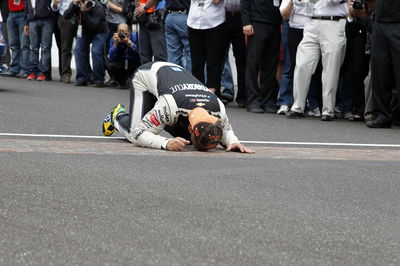
That’s the most famous 500 tradition, but far from the only one. As well as enjoying a cold bottle of cow juice, the winning driver will always kiss the bricks. Don’t worry, this isn’t code for something filthy – it’s the practice of leaning down and kissing the strip of bricks that still runs across the speedway’s start/finish line, left over as a nod to its previous racing surface. This one’s a bit newer – it’s been done every year since Gil de Ferran started it in 2003.
During the pre-race festivities, someone always sings ‘Back Home Again in Indiana’, a song with close ties to the race’s home state. Obviously. At the race start, the field will be led around the formation laps by the celebrity-driven pace car, which each year is one the latest high-performance models from one of the big American brands (since 2002, they’ve been exclusively supplied by Chevrolet, and this year, it’s the new Corvette ZR1).
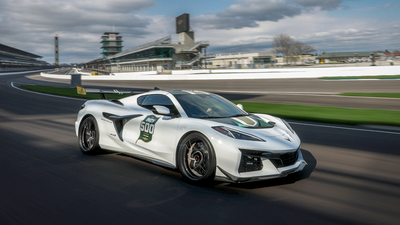
While the action’s taking place, meanwhile, plenty of fans will chow down on (at least) one of the speedway’s signature breaded pork tenderloin sandwiches. Well, they will if they’re not in the snake pit. This is a section of the track’s infield that’s not for the faint-hearted, where upwards of 20,000 people pack in for a truly enormous booze-fuelled raver occasionally soundtracked by a passing race car. What started as a rowdy gathering place for those without grandstand tickets has evolved into a fully-fledged day-long mini-festival, with live music acts before and after the race.
Is anyone racing there that I’ve heard of?
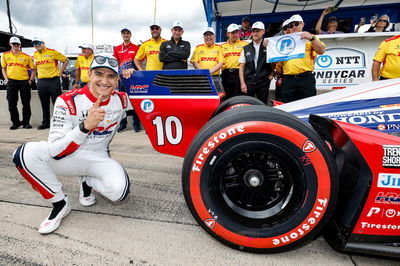
Well, most of the regular IndyCar championship grid is entering. These include former F1 racers Marcus Ericsson and Alexander Rossi, as well as talents who’ve long been linked to potential F1 drives, like Pato O’Ward and Colton Herta. Meanwhile, the 2025 championship is being dominated by Spanish driver Álex Palou, although he's yet to win the 500.
The 500 also often sees drivers who used to race in the series full-time make one-off returns for a shot at glory. These include past 500 winners Hélio Castroneves (four wins) and Takuma Sato (two wins).
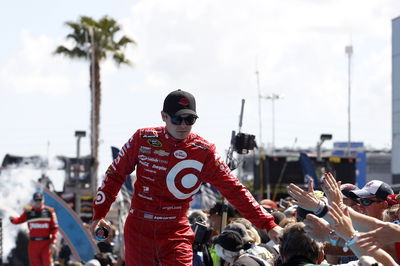
After unsuccessfully attempting it last year due to the 500 being hit with a rain delay, 2021 NASCAR champion Kyle Larson will have another crack at The Double. This involves completing the Indy 500, then immediately flying 430 miles to Concord, North Carolina, to race in the Coca-Cola 600, a NASCAR race that takes place that evening. So far, Tony Stewart is the only driver to successfully complete both races in one day, in 2001.
There are also plenty of drivers you should know if you don’t already. Mainly, you should know of Sting Ray Robb, because his name is Sting Ray Robb.
How can I watch it?
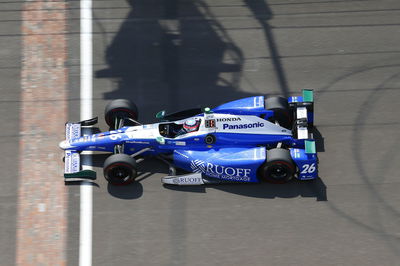
Depends on where you are. If you want to go there yourself, race day tickets are still on sale at the time of writing and cost from as little as $50, although you’ll have to get there too. That’ll be relatively affordable if you live in downtown Indianapolis, but not if you live in, say, Tokyo.
If you’re in the US and you want to watch it on TV, Fox currently broadcasts every IndyCar race live. There might be a problem if you live in the Indianapolis area, though – typically, the race’s live TV broadcast is blacked out in the region to encourage local attendance. This is usually only lifted if the race is a complete sell-out. The only recent exceptions are 2020 and 2021, when the pandemic severely restricted attendance numbers, and in 2024, as a ‘thank you’ to those who stuck it out during the race’s lengthy rain delay. There are increasing calls for the blackout to be scrapped permanently, though.
Of course, those of us in the UK are very much not in the Indianapolis area. We can watch the race on Sky Sports’ F1 channel, which shows every IndyCar race live.















Comments
No comments found.